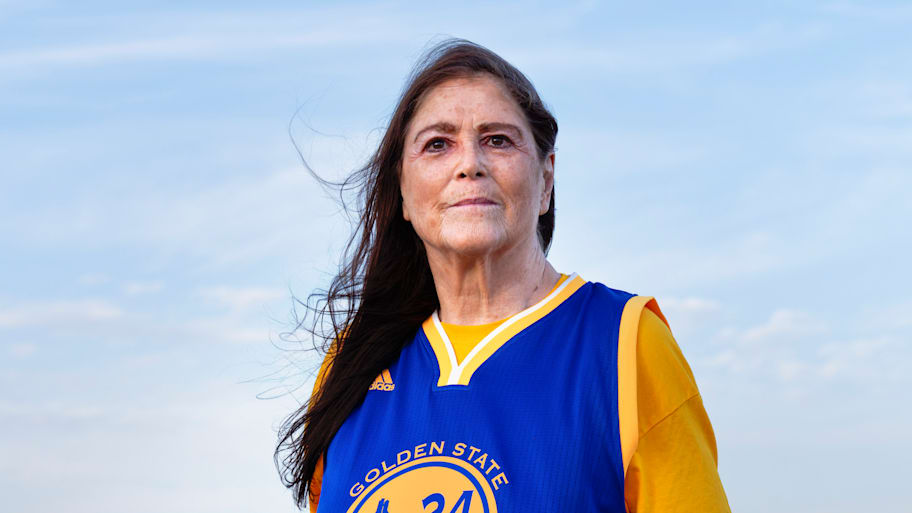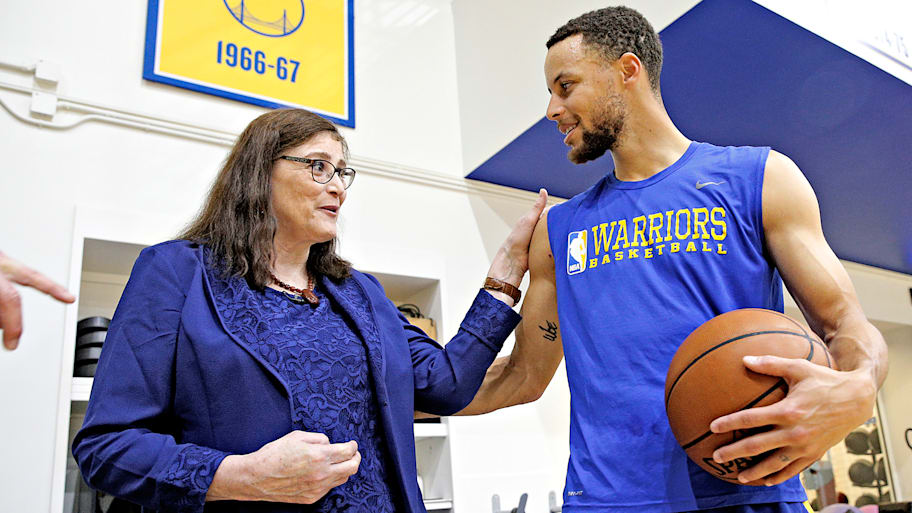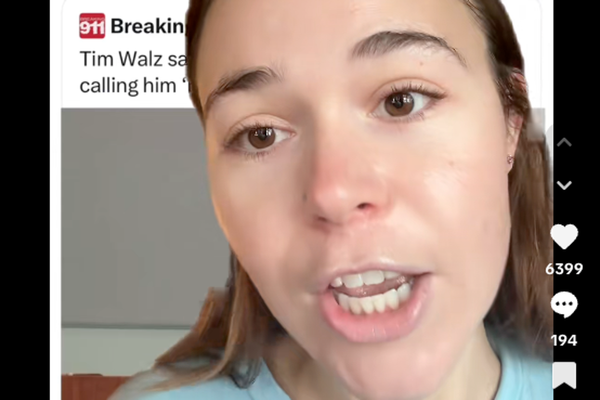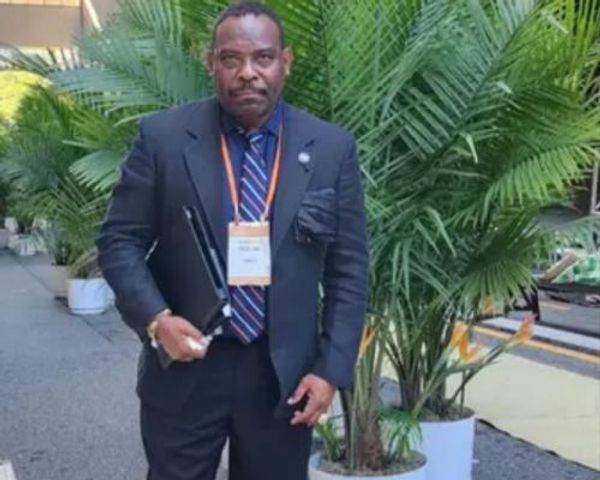
Denise long lived on Irwin Street in her speck of a hometown. It was the summer of 1967 and the view from her bedroom window presented the general store, the post office (which her mother ran) and a hangout for teenagers, the Sugar Shack. She could almost see the entirety of Whitten, Iowa, (population almost 200) from there.
Oh, did she love that hangout. The only thing she loved more was basketball. The 5' 11" forward scored and scored and never stopped scoring, as if she were put on this planet for that purpose. Sometimes, she combined those loves, entering the Sugar Shack with a basketball tucked under her right arm. One day, that same summer, a friend asked to speak to her outside.
“His name was Rex,” she says on the phone from her home in Kansas. Nearly six decades later—she’s Denise Long Rife now—she’s reliving a magical period of her life that became part of sports history.
Back to the story. They stopped out front, near the entrance of the Sugar Shack. He looked down at her, his face becoming serious. “Denise,” he said, “you’re going to have to stop being so crazy about basketball. You need to think about your future, and how you’re going to create some wealth. There’s no future in girls’ basketball, and I just want to tell you, right now, that you act like the Boston Celtics or the Los Angeles Lakers are going to draft you. You’re not going to be drafted by an NBA team. You might as well forget it.”
Sports Illustrated: Your response?
Denise Long Rife: I don’t even know who [those teams] are.

Some 20 months—and a few thousand points scored—later, Long Rife went to the principal’s office at Union-Whitten High School one May afternoon. She wanted some construction paper to make a bulletin board posting. She ran into a friend named Dennis there. The boy started laughing. When she asked what was so funny, he responded, “Well, you’ve been drafted!”
DLR: I figured I was being drafted by the Army. And he says, “No, you’ve been drafted by the San Francisco Warriors!”
She didn’t know of that NBA franchise, either. But she sure did remember that conversation outside the Sugar Shack.
DLR: It’s almost like, when they said, “No one is going to sink the Titanic. This boat cannot be sunk, not even by God himself.” Well, it did sink. And I think God overheard that conversation between me and Rex.
Long Rife played basketball in an era far distant from the modern WNBA. In the late 1960s, female hoopsters played six-on-six, with three guards set up on one side of the court to defend, and three forwards set up on the opposite end to score. They could only dribble twice before they had to shoot or pass.
In many respects, this version of basketball naturally lifted some of the game’s best aspects—movement, precision passing and, of course, offenses that could score almost at will. To become the scorer among all scorers, Long Rife decided on a singular strategic approach.
DLR: If I’m only going to get two dribbles, I’m going to make sure I can score from any place on the court, which … I did.
SI: Describe the shots involved, please.
DLR: I developed a very good right-handed hook shot and a very good left-handed hook shot. I was good at long shots. And then I developed a drop-step jumper. My [first two seasons], I didn’t really have a jump shot.
SI: You must have annihilated all the fools who dared to challenge you in H-O-R-S-E, no?
DLR: I beat Sam Jones in two games of H-O-R-S-E.
As Long Rife describes it, she felled the five-time NBA All-Star by positioning her body behind the basket, leaning back and banking in shots from the left side of the goal.
DLR: He couldn’t do it.
SI: So you really had an underhand bank shot?
DLR: I had two.
SI: You had to be creative in six-on-six?
DLR: I used to have what I call a “screw shot.” I’d be right underneath the basket, and I’d twist the shot with my hand, and the guards couldn’t really get to it, because I wouldn’t extend my arms out. I would keep the ball close on the right side of my chest, and I would take the ball and “screw” it and it would hit the backboard and go in.
In high school, Long Rife scored 6,250 points, a national record back then. The three-point shot did not yet exist. Her mark wouldn’t be broken for 18 years. She shot Union-Whitten to the state title in her junior year. That season’s championship game—viewed on TV by 3.5 million people across the Midwest—can still be found on YouTube. And, while most consider her 64 points in that triumph as a seminal moment in her basketball legend, emblematic of her point-scoring prowess, Long Rife never exactly saw it that way.

DLR: Not trying to [use] false humility or anything. But that really wasn’t one of my better games.
She surpassed 100 points in three separate games, including one in which she scored 111. Her coach had removed her from a blowout with 3:59 left in the fourth quarter, believing Long Rife had amassed 112 points, a state record at the time.
DLR: And [that tally is] truthful. I did not make 111!
In the locker room that night, her coach, the opposing coach and the official scorer grilled Long Rife about the number of free throws she had shot. Her cousin, a teammate, remembered five. Her coach still has the scorebook, though, and both the coach and Long Rife have maintained that it shows six made attempts. That night, her coach asked, “Why are you doing this to her?”
The scorekeeper said they shouldn’t have “run up the score.”
“What do you mean, run up the score?” her coach said. “I can’t help it if she’s good.”
DLR: But their record book was the official one. How many points could I have gotten, if I stayed in for that other three minutes and 59 seconds? I may not have been quite 16 yet. And that’s not a very nice thing to do.
Consider that last moment one of dozens of moments when someone—often male—told Long Rife what she couldn’t do or couldn’t be or wouldn’t have or didn’t deserve. Which led to an unexpected, unintended consequence.
SI: It sounds like you felt bad for your opponents?
DR: One time, one looked up at me and says, ‘I can’t believe I’m guarding you.’ Why? ‘Well, you fouled out all our guards. I’m not even a guard. I’m a forward. I’m second string at that.’ And I looked at her and said, ‘Yeah, I can kind of understand that a little bit.’
SI: How did most respond to your basketball talent and obsession?
DR: Well, I really liked baseball. I started out with my twin brother, Henry, who was a good pitcher. He could really throw, like 90 miles an hour, and the catcher had to wear an extra sponge in [their] glove. I caught for him in sixth, seventh and eighth grade … until my coach found out I was catching him without protection. He had a fit over that.
Didn’t stop her. That’s how Long Rife started playing basketball. Before Title IX passed in 1972. Before gender-equity, period. That she still gained renown, her team and her sport more popular than any boys’ squad in any sport, only spoke to the gravitational pull that resulted only from her play. People knew her, knew of her, anyway.
Long Rife recalls another moment from that summer of 1967. Outside, shooting baskets with a friend, they took a break, settling under an elm tree. The friend began to marvel. “Wouldn’t it be great if you could get on the Johnny Carson show and tell everybody about girls’ basketball?”
To which Long Rife responded, “Cindy, that’s not going to happen.”
Two years later, she was drafted—and not by the Army. By the NBA.
DLR: I had one question. Do I have to go?
Well, yes. Sort of. Maybe. Franklin Mieuli worked as a radio and television producer in San Francisco. He knew how to tell a story that would resonate. He also owned the Warriors. His selection of Long Rife in the 13th round is often framed as little more than a publicity stunt. It was that. But it was more than that.
Perhaps Mieuli knew that NBA commissioner Walter Kennedy would never allow the selection. And Kennedy did veto the pick, on the grounds that the league did not draft high school players. Still, Mieuli and Long Rife made history. Since then, only one other woman has been drafted by an NBA team. (Lusia Harris, 1977, the Jazz; she declined to try out.)
Mieuli brought Long Rife to California, where, lo and behold, she did appear on The Tonight Show Starring Johnny Carson just over a week after she was drafted. The show also featured Jack Dempsey and Gene Tunney, two elite heavyweight boxers known for their “Long Count Fight” in 1927.

DLR: I had Jack Dempsey on my left and Gene Tunney on my right in this monitor room. They were debating who really won that fight. Dempsey tried to get my dad to be a prizefighter, and Dad said, “No, I’m too pretty, and my wife might divorce me.” He signed a $2 bill for my father.
Mieuli had a plan. Flying Long Rife to San Francisco wasn’t a “trip” of any sort. Nor was the player written off as a publicity stunt lacking in skill, magnetism or accomplishments. Long Rife had more of all three than any female player in America. Mieuli wanted her to live in the Bay Area, as part of a new venture he created.
Mieuli agreed to pay for Long Rife’s college tuition if she played in his four-team women’s professional hoops undertaking. He named it the Warrior Girls Basketball League. Their games took place before Warriors’ home contests. Long Rife became the centerpiece of his efforts. Mieuli gave her $5,000 for expenses and leased her a purple Jaguar to drive. No player received a salary.
While in San Francisco, Long Rife also met the Giants’ Willie McCovey at a photo shoot. She remembers leaning on a bat, looking up at the future Hall of Famer as if she worshipped him. His head was thrown way back, and he was laughing.
DLR: And I also got [to interact] with Willie Mays, too. I just took his hat off his head and put [it] on. And Willie Mays said back to me, “Well, now that you got my hat, I’m going to teach you how to bat.”
SI: Where is the hat now?
DLR: I made a big mistake. I gave it back to him.
Around this time, she met Wilt Chamberlain. Long Rife asked for his signature, to which he responded, “I should be getting your autograph!”
After one game Mieuli took Long Rife and her sister to a local bar where Wilt the Stilt liked to hang out. He was Long Rife’s favorite player, so unlike everyone else in his sport—not unlike, well, her.
DLR: We go over and play the jukebox. We didn’t want to miss him. I had kept my suit on because I’d played a game before the Warriors game. So I was leaning over to pick out some songs, and I felt ice cubes go down my top. And I turned around. And I put my hand up. And Wilt Chamberlain blocked my hand. And he said, “I can block your shot anytime.”
The experiment Mieuli masterminded folded after just one year. Long Rife went back to Iowa, where she attended Marshalltown Community College. One day, a man named Paul approached her and told her he had heard she had taken up “dancing.” He didn’t mean square. An exotic dancer nearby had been using her name as a stage name. Paul took her right over there. Long Rife asked the dancer to stop. The dancer cited higher tips as the reason why she would continue to appropriate the significance behind what Denise’s name had come to mean.
Long Rife’s mother told her that her father had already paid the establishment a visit while she was in California. He told the bartender at the club that this stage name better cease, slamming a fist on the bar for emphasis.
DLR: I was so depressed over it. I was walking into my house, and we had a Bible beneath the TV on a shelf, and I noticed there was something sticking out of it.
It was a Bible verse about God and belief and unwavering faith. She brought her Bible to school with her the next day, when, in a common area, a group of four female students noticed her and it. They approached. “Aren’t you Denise Long?” Well, yes. “Are you a Christian?” Well, maybe.

They promised that a quadriplegic man would visit her house soon and he did. He could drive, with a modified vehicle. He could read, turning pages with a device attached to his mouth. He quoted verses from the Bible and told her that, with God, she could do anything that she wanted.
DR: My knees were trembling. What are the chances? One day, you hear you’re a go-go girl at a tavern. The next, Jesus sends four of his messengers to talk to me.
Taking that as a sign, Long Rife left Iowa again to play for a Christian team that would barnstorm throughout Asia in the early 1970s. At halftime, they would sing gospel songs to the crowd.
DLR: A couple girls played guitar. No one played a trumpet. We would sing Christian songs at halftime, to the crowd. One time in Taiwan, we got the whole crowd singing with us (the song: “What A Friend We Have In Jesus”). We won 10 out of 22 games or something like that. Not bad. We memorized their languages by phonetics, and we would give our testimony in Chinese.
After that tour ended, Long Rife returned home to Iowa once more. She often attended the high school state championship game. But schools had begun playing five-on-five, which she didn’t prefer.
Long Rife had earned two degrees by then—the first in physical education, the second in theology. Bored, and in need of a profession that wasn’t on the fringes of the basketball world, she eventually became a pharmacist, graduating from her training in 1995. The pharmacy, she found, could grow tedious when not busy. Then she became aware of a new women’s basketball league, the WNBA. Watching games helped her pass the downtime.
SI: What did you think?
DLR: I was amazed. I just couldn’t believe they were getting so good. The girls are really fun to watch. I mean, Caitlin Clark is really phenomenal.
SI: When did you first become aware of her?
Long Rife sighs over the phone. Later than most, she says. She liked to visit a Baptist church in Des Moines, where someone asked what she made of Clark. Long Rife had no idea who that was. “You really haven’t heard of Caitlin Clark?” No, she hadn’t. Who was she?
DLR: And she says, “Well, she’s really, really good.” And I [found out] she’s from Iowa. And I did watch a bunch of her games right after that. She’s just really out of this world.
SI: Did you watch her and see, maybe, an alternate universe, in which her life is your life?
DLR: Caitlin Clark and I have totally different personalities. [She is] gregarious. Sometimes, she’ll put both her hands out to the crowd, [as if] to say, “Did you see that?” I was under such an autocratic coach. If I did that, I’d be on the bench.
The WNBA’s expansion efforts begin in full force this season in a place familiar to Long Rife: San Francisco, with the Golden State Valkyries. The same organization that drafted her now has a counterpart in a professional women’s league, one that helped her endure the boredom baked into being a small-town pharmacist.
The Warriors, perhaps already thinking about a WNBA partner, invited Long Rife in for an honorary jersey ceremony in 2018. She met KD and Chef Curry and received a long, and loud, ovation from the crowd. That night, she did not consider whether she could have played in the NBA, or whether Clark could now.

The WNBA is growing, and no one has driven that more than another sharpshooter from Iowa. Clark and Long Rife played in different eras. Nobody, man or woman, was draining shots from the logo in 1969. Clark does it now as proficiently and regularly as any NBA cager.
DLR: She had—I don’t know how else to put it—advance notice of what the game was going to be like. She has a three-point shot. Dribbles very well. Goes behind the back and goes the other way. I think she’d fare better in the NBA than I would have back then.
She adores Clark, and so many other players. Long Rife—once the subject of headlines like “Denise Long: The Cutest Warrior of Them All”—also believes Clark has handled the outsized attention far better than she did.
DLR: I was more nervous [when I played]. She doesn’t have that personality. She’s carefree, confident.
Long Rife retired around 2016, after working for Osco and Walgreens for 20 some years. She had her right hip replaced. Had her left knee replaced. Had her left hip replaced. Underwent quadruple bypass surgery. Each procedure, at least in some way, marked basketball’s imprint on her.
These days, she cannot jog. She cannot twist her left leg. But she will, occasionally, still pop by the local rec center where she lives in Rose Hill, outside of Wichita, and hoist a few attempts toward the rim. No threes. No floaters. Just like in those golden days, when she left her imprint, still sizable, on the sport of basketball.
More WNBA on Sports Illustrated
This article was originally published on www.si.com as Nearly 50 Years Before the Valkyries, Denise Long Rife Was Drafted by the Warriors.







